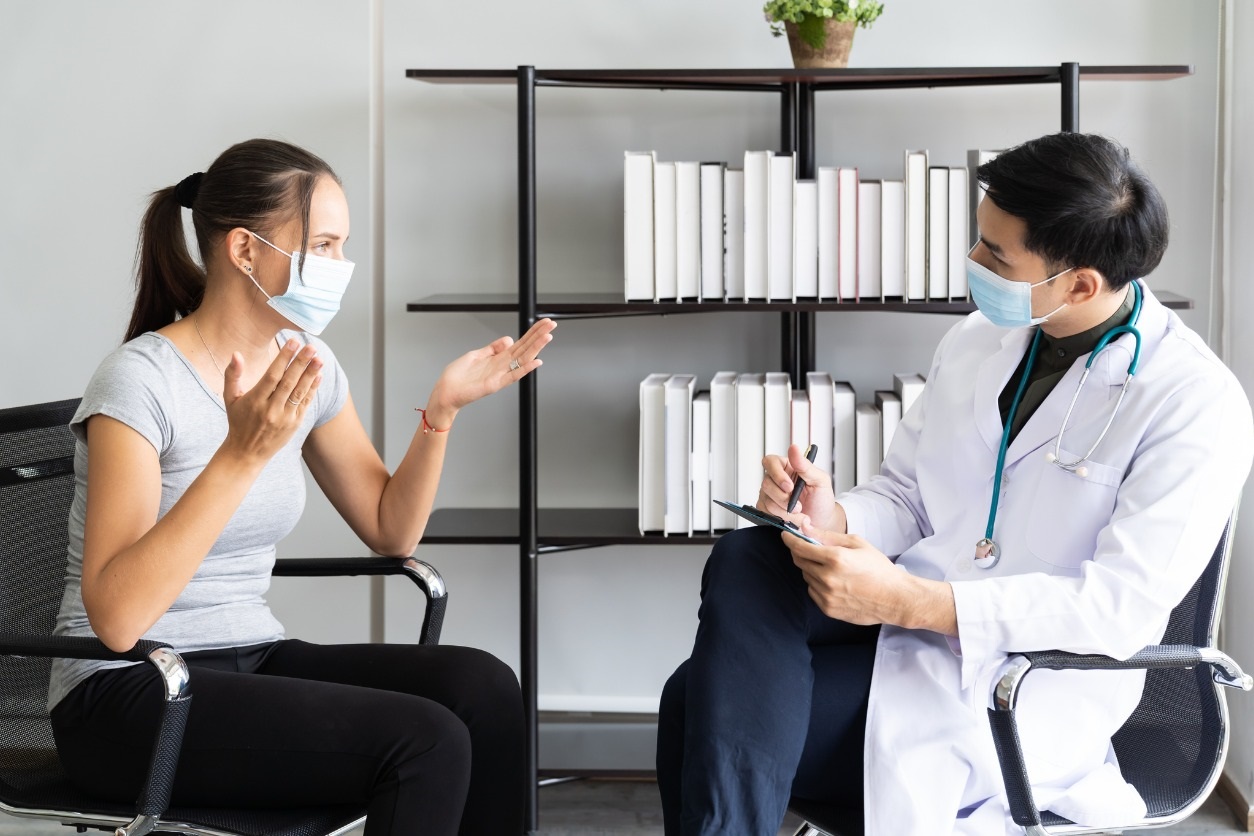Know Your Breasts: 4 Breast Cancer Symptoms to Look Out For

Written By: Emily P. Taylor, Lombardi Comprehensive Cancer Center - Georgetown University; Claire C. Conley, PhD, Lombardi Comprehensive Cancer Center - Georgetown University
In 2023, a national survey found that fewer than half of American adults are familiar with common breast cancer symptoms other than lumps. This October, in honor of Breast Cancer Awareness Month, we are highlighting lesser-known signs of breast cancer!
What’s Normal for your Breasts?
In order to notice changes in your breasts, you need to be familiar with what’s normal for your breasts. Everyone’s breasts are unique and change over time. Before and during your period, your breasts may be swollen and more sensitive. While pregnant, lumps can develop as the breast milk glands fill. As you near menopause, hormone level changes can cause tenderness and lumpy breasts. You also could have denser breasts due to hormonal supplements like birth control pills or hormone replacement therapy (HRT). These variations are all natural parts of life!
Breast self-exams use your eyes and hands to look for changes in skin texture, lumps, or nipple appearance. Specifically, keep an eye out for changes in only one of your breasts. Although breast self-exams have not been shown to increase survival rates after breast cancer diagnosis, they can help establish what is normal for you! Remember that breast self-exams are not a substitute for a clinical breast exam by a medical professional or a mammogram.
Symptoms of Breast Cancer
Lump in Breast
Breast lumps may or may not be visible on the surface of the breast. Sometimes, lumps appear as an area with a firm feeling, but aren’t visible by just looking at the breast. They can be on the breast themselves or up into the armpit. Just because you see or feel a lump does not mean that you have breast cancer. Many other conditions can also cause breast lumps.
Breast Pain
Many people experience pain and sensitivity in their breasts at different times in their menstrual cycle. This is normal! According to the American College of Radiology, pain in both breasts that comes and goes typically doesn’t require additional screening beyond regular mammograms. However, persistent pain in a specific area of one breast is a concern. If this describes you, talk to your doctor right away about breast cancer screening.
Nipple Changes
Nipple inversion is when the nipple points inward instead of pointing outward. Did you know that more than 20% of men and women have inverted nipples? Inverted nipples are normal for many people. However, a sudden change in the size, orientation, or shape of your nipples, could be a warning sign of breast cancer.
Other nipple symptoms include nipple pain and/or nipple discharge (bloody or clear fluid leaking from the nipple). If you experience nipple discharge continuously, only from one breast, and if you are not pregnant or breastfeeding, talk to your doctor right away.
Changes in Skin
One rare type of breast cancer can cause persistent dimpling of the breast’s skin. This is when the skin has an uneven texture similar to the puckering of an orange peel. Skin dimpling is especially concerning if it occurs only in one location on the breast. Also watch for any new rashes or irritation on the breast, as well as redness or flaky skin on the nipple.
What about Male Breast Cancer Symptoms?
In 2024, 2,790 cases of breast cancer in men will be diagnosed, accounting for 1% of all breast cancer cases. Symptoms of breast cancer in men are similar to symptoms in women. For men, painless breast lumps tend to present below the areola, the darker patch of skin around the nipple.
What To Do Next
Remember, experiencing these symptoms doesn’t necessarily mean you have breast cancer! Different people have different symptoms, and some people may not have any at all. These symptoms can also present with many other non-cancer problems. If you notice any of these symptoms or changes from your normal breasts, contact your healthcare provider for guidance and peace of mind.
Mammograms are a helpful way to detect breast cancer, but women often don’t get them until the age of 40. Breast cancer can appear at any age, so learning what is normal and abnormal for your body is important. Stay informed and take care of yourself!
More Articles

Prevention, Survival and Recovery from Cancer: The Case for Exercise
Research shows that exercise and physical activity can help prevent cancer, as well as increase odds for survival and improve recovery. Learn ways to improve functioning and quality of life after cancer with exercise.

Six Ways to Support a Friend with Cancer
A cancer diagnosis can come as a shock-- especially when it happens to a friend. Here are six ways to support a loved one who was recently diagnosed with cancer.

Choosing a Therapist after Cancer
A cancer diagnosis is an extremely stressful event. Many cancer patients find it helpful to share their experience with a therapist. Learn how to find a therapist that suits your needs as a cancer patient.

